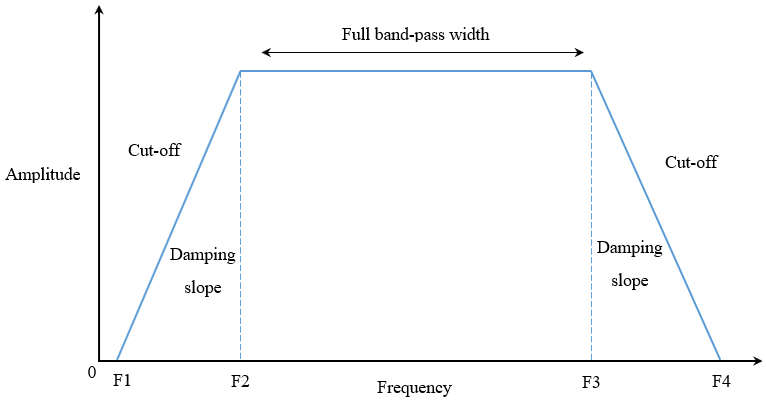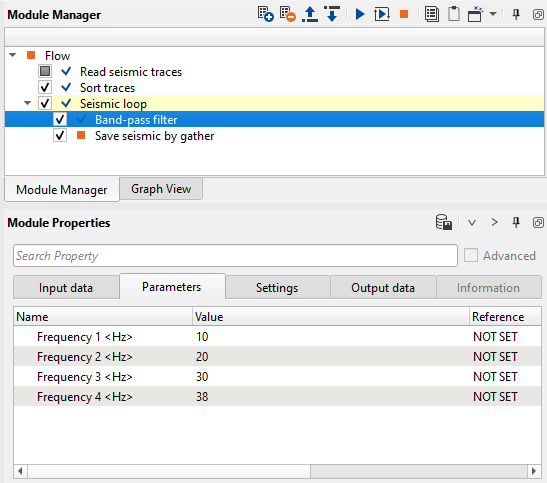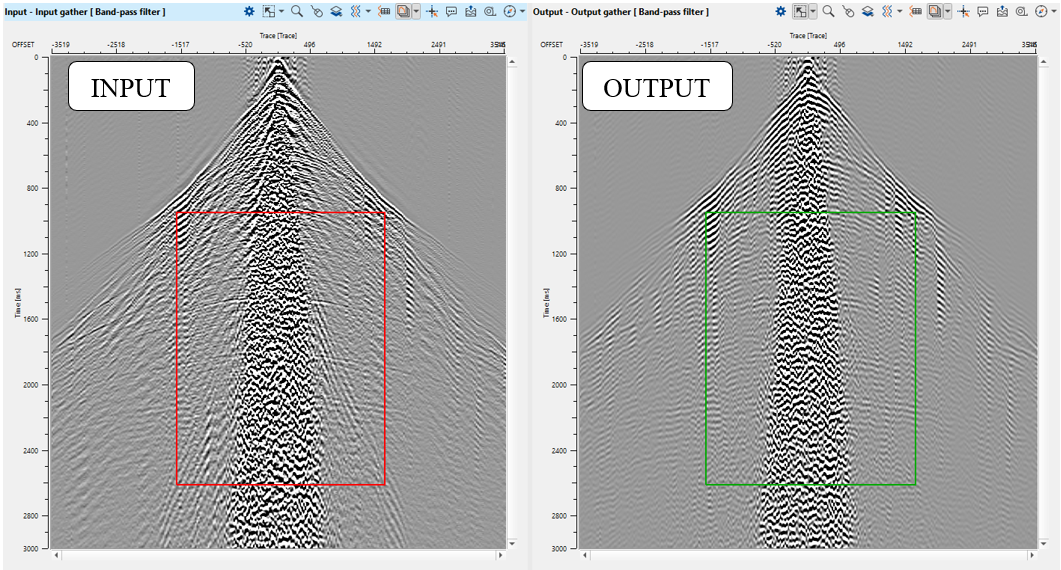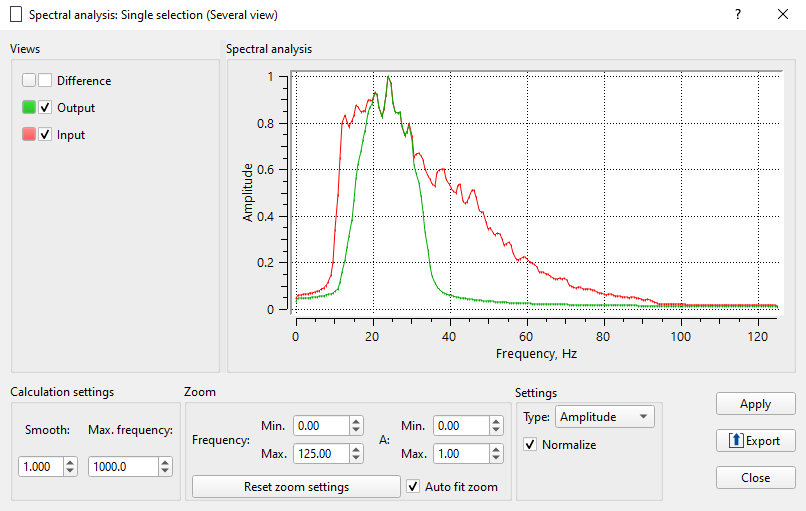Frequency filtering
![]()
![]()
This module works in the frequency domain and has a single bandpass filter mode, for the entire trace length, specified as four corner frequency values F1-F2---F3-F4. In the frequency domain application, the amplitude spectra of the input seismic trace and the filter operator are multiplied. The main goal of using band-pass operator is passing limited amplitudes via the cut-of frequencies. Where F1-F2 is the first damping slope, F2-F3 is maximum band pass and F3-F4 is the second (end) damping slope.

Fig.1 Band-pass spectrum view.
![]()
![]()
Input DataItem
Input gather - connect/reference to input seismic traces (prestack or poststack) of any sorting.
![]()
![]()
Frequency 1 - start frequency, start damping slope.
Frequency 2 - start full band-pass frequency, end damping slope.
Frequency 3 - end full band-pass frequency, start damping slope.
Frequency 4 - end frequency, end damping slope.
![]()
![]()
Auto-connection - By default, TRUE(Checked).It will automatically connects to the next module. To avoid auto-connect, the user should uncheck this option.
Bad data values option { Fix, Notify, Continue } - This is applicable whenever there is a bad value or NaN (Not a Number) in the data. By default, Notify. While testing, it is good to opt as Notify option. Once we understand the root cause of it, the user can either choose the option Fix or Continue. In this way, the job won't stop/fail during the production.
Notify - It will notify the issue if there are any bad values or NaN. This will halt the workflow execution.
Fix - It will fix the bad values and continue executing the workflow.
Continue - This option will continue the execution of the workflow however if there are any bad values or NaN, it won't fix it.
Calculate difference - This option creates the difference display gather between input and output gathers. By default Unchecked. To create a difference, check the option.
Number of threads - One less than total no of nodes/threads to execute a job in multi-thread mode. Limit number of threads on main machine.
Skip - By default, FALSE(Unchecked). This option helps to bypass the module from the workflow.
![]()
![]()
Output gather - generates the band pass filter applied output gather.
Gather of difference - generates the difference gather display before and after applying band pass filter.
There is no information available for this module so the user can ignore it.
![]()
![]()
A test seismic data set is the Poland 2D (land) line, you Poland 2D line that is accessible on the internet free or it is also included to the g-Platform installation (C: \Program Files (x86)\Geomage \gPlatform \demodata\ Poland_2D_Vibroseis_LINE_01).
An example of the workflow for band-pass filtering:

Fig.2 Workflow example.

Fig.3 Gathers: input (left) and output (right).

Fig.3 Amplitude frequency spectrum: input (red) and output (red).
![]()
![]()
There are no action items available for this module so the user can ignore it.
![]()
![]()
YouTube video lesson, click here to open [VIDEO IN PROCESS...]
![]()
![]()
Yilmaz. O., 1987, Seismic data processing: Society of Exploration Geophysicists
Oppenheim A. V., and Schafer, R. W., 1975, Digital signal processing
 If you have any questions, please send an e-mail to: support@geomage.com
If you have any questions, please send an e-mail to: support@geomage.com